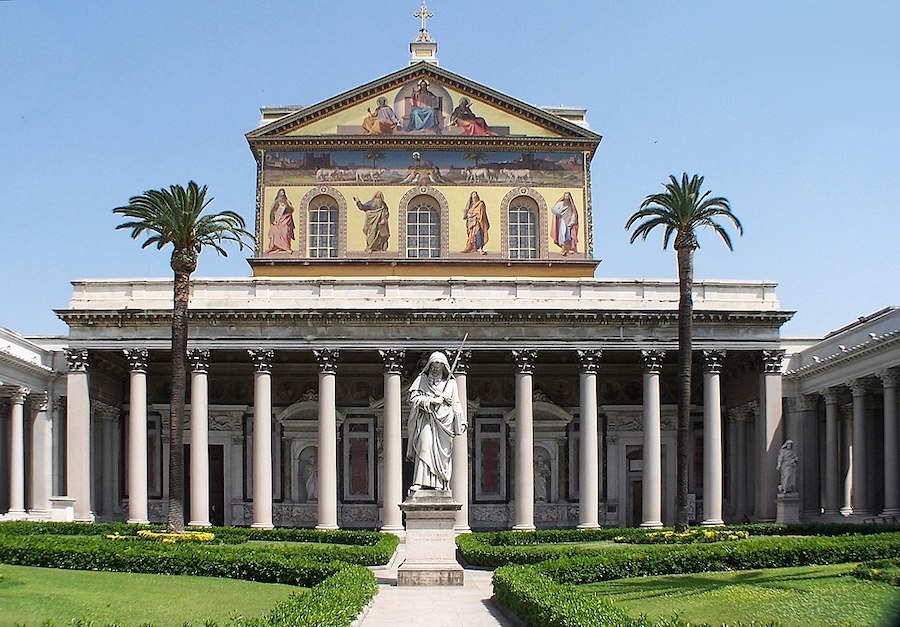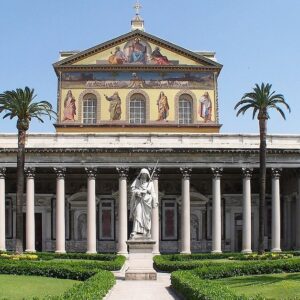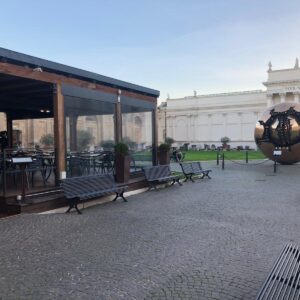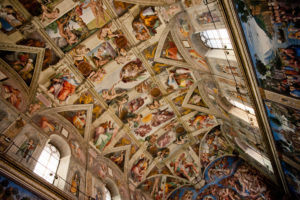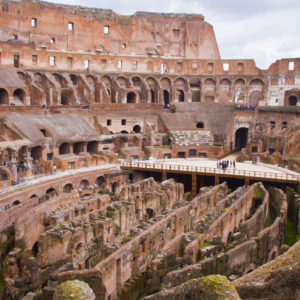Paolo of Tarsus (Saul), better known as Saint Paul, was one of the apostles. He is referred to as the apostle to the Gentiles, and the first missionary of the Christian message to the pagans. Paul was a Jew, initially against the new Christian church, he made it his mission to convert people to Christianity.
During his journey from Jerusalem to Damascus to organize the repression of the Christians in the city, he was suddenly enveloped by a bright light and heard the voice of Jesus saying to him: “Saul, Saul, why do you persecute me?”.
Blinded by this divine light, he wandered for three days in Damascus, where he was healed by the leader of the small Christian community in that city, Ananias.
Comforted by this light, he returned to Damascus and began to preach with enthusiasm, arousing the anger of the pagans, who considered him a renegade and even tried to kill him. This was the starting point for his many apostolic journeys with the aim of converting as many people as possible to Christianity.
In Jerusalem he found a very tense atmosphere, the Jews were suspicious of him, and in the end he was accused of having brought a non-Jewish Christian into the temple, thus desecrating it. This provoked the reaction of the crowd and only the intervention of the tribune Claudius Lysias saved him from being lynched; convinced, however, that Paul was a prejudiced Egyptian, he had him flogged, despite his protests that this was illegitimate, since he was a Roman citizen.
Lysias took him to prison and the next day, wanting to get rid of the tricky question, sent the Apostle under escort to Caesarea, to the procurator Antonio Felice, who held him for two years, hoping for a ransom.
His successor Portius Festus, in 60, arranged for a trial against him in Jerusalem, but Paul opposed this and as a ‘civis romanus’ appealed to the emperor. As soon as it was possible, he was handed over to the centurion Julius to be transferred to Rome, where he arrived in 61. Here he was allowed to stay in a rented room, in a kind of probation awaiting a trial that never took place, due to the non-arrival of the accusers from Palestine.
The Church of San Paolo alla Regola
It is said that the room where Paul stayed is today’s Church of San Paolo alla Regola, in fact the apostle’s room is still preserved inside, transformed into a chapel. The church, called ‘S.Paolino’, is very old: the first official mention dates back to a bull by Pope Urban III in 1186. After being officiated for a long time by the friars of St Augustine, in 1619 the church was entrusted to the Franciscans of the Third Order Regular of St Francis of the Sicilian Nation, who established a ‘Collegium Siculum’. The College, under the direct protection of King Philip IV of Spain, was efficiently equipped with a substantial library and archives (both of which were destroyed in the turmoil of the first Roman Republic in 1799), as well as a very precious relic of St Paul, no less than part of his arm.
In 66, probably in Nicopolis, he was again arrested and taken to Rome, where he was left alone by his disciples. This time the Roman court condemned him to death because he was a Christian; he was traditionally beheaded on 29 June of an unspecified year, perhaps 67, but as a Roman citizen he was spared crucifixion. The sentence took place in a place called ‘Palude Salvia’, near Rome (later called ‘Tre Fontane’, a name derived from the three gushes that gushed out when his severed head bounced three times on the ground); the Christians collected his body and buried it on the Via Ostiense, where the magnificent Basilica of St Paul Outside the Walls was later built.
The Mamertine Prison
We can assume that the location where St Paul was taken during his second arrest is the Mamertine Prison. The Mamertine, located on the Clivo Argentario below the church of San Giuseppe dei Falegnami, was the oldest, and for a long time the only, prison in Rome, built by King Anco Marzio. It was the symbolic prison for illustrious prisoners in ancient Rome and it is no coincidence that it is located in a very central area, close to the Via Sacra in the Forum. For about a thousand years, it housed in shackles the great enemies of the people and the state, the great losers and traitors of Rome: from the Samnite king Pontius, to the king of the Gauls Vercingetorix and the conspirators of Catiline. The prison consists of a trapezoidal room, built of blocks of tufa from the Aniene river. The original entrance consisted of a small door at a higher level than the present floor, now walled up, which opened in the right wall. Beyond this door were the other rooms of the prison, known by the name of “Lautumiae“, because they were built in ancient tufa quarries. In the floor there is a circular hole that was once the only entrance to the room below, which is now accessed by a modern staircase. This was the most secret and terrible part of the prison, known by the name of “Tullianum“: here prisoners of state were thrown and then strangled.
This is just a small part of St Paul’s life linked to some of Rome’s most important monuments the you can discover with our Private Tour in the footsteps of Saint Paul. Stay tuned for further interesting stories.

